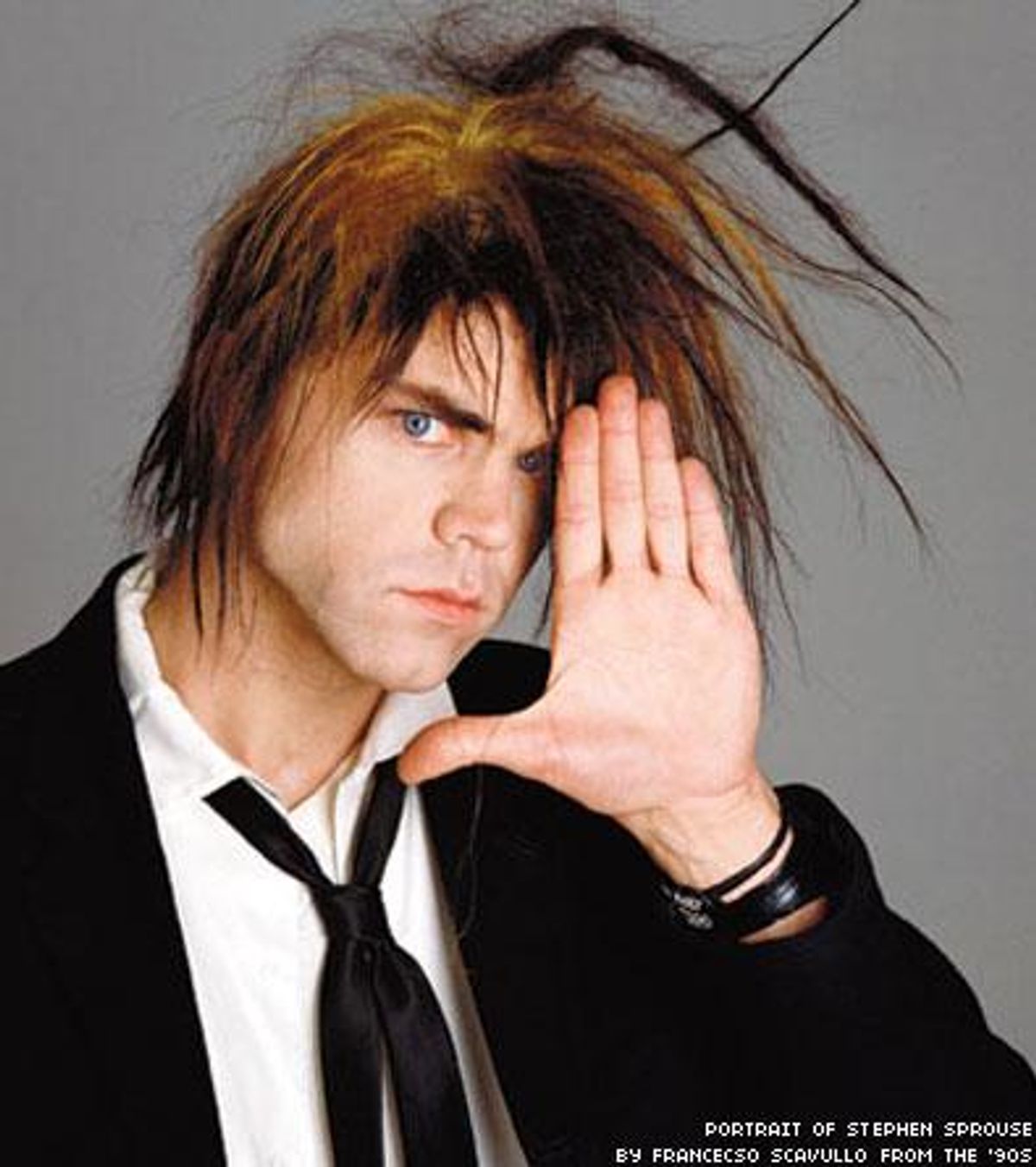Entertainment
The Prince of Cool

By continuing to use our site, you agree to our Private Policy and Terms of Use.

Before the mid-1950s there was no such thing as cool. Cool started with modern jazz, hipsters sniffing Benzedrine, the Beats. Cool started with James Dean, Sal Mineo and Jean-Paul Belmondo. Cool continued in the 1960s with Easy Rider and mind-altering drugs and the Merry Pranksters of Ken Kesey. In New York City cool was junk, the Electric Circus, the Velvet Underground. Being cool meant a certain irony, being outside of mainstream society and viewing it with a certain amount of suspicion. Nice people were not cool. Nice people did not have tattoos and piercings. Now, almost everyone who thinks he or she is cool or different has a tattoo but now its not cool, because it is mainstream. Stephen Sprouse was cool. He appeared to be an outsider, with his lanky, seemingly adolescent and sullen manner, his wig, his watch cap, his post-punk/pre-grunge appearance. He was so cool I couldnt believe he would ever be my friend. What made him cool? In some ways he was just like the regular guys I had grown up with. He was a nice guy and who loved kids and animals. People thought he was a tough guy, with his black clothing and his gravelly voice. In fact he was not surly, he just looked that way. He projected an aura that was all his own, something akin to that of Iggy Pop, Dee Dee Ramone, Sid Vicious, Johnny Thunder. He wasnt like themalthough maybe those guys werent really like how they appeared either. But whatever that quality is, that is what he projected. One thing I have found: People are scared of people who dont talk much. As it turns out Steve was smart but completely inarticulate. He was a totally visual person. You felt that he struggled for words. He was a perfectionist, he wanted everything he created to be exactly as he had envisioned it, and so nothing he touched was ever watered down, or commercialized, or changed by a marketing division. So what we have now in his body of work is -- unlike most fashion -- purely the end product of his vision. He created other things as well: He was a painter, a designer, a trend-spotter, a decorator. He would decorate anything he could get his hands on. If he liked your shoes and he was your friend he might take a marker and scrawl something on them. Even if you didnt really want your shoes written on, later you would realize how much they were improved, and how daring he was, really, to not take objects at their face value and how he felt free to make them his own. Whenever I was on a book tour in the UK I would wear something designed by Stephen and whenever I walked into a room it would fall absolutely silent. Later that day there would be calls from the press to the publicist handling my book, asking her WHO was I wearing, and how much it cost because, they said, it must have been insanely expensive. But in NYC during the same era (the era of big shoulder pads -- like an extra set of breasts, except on the shoulders, I always thought -- and ladies with perfect, stiff hair and beige lipstick), Stephen was underappreciated. Dining regularly with Paige [Powell] and Andy [Warhol] at Le Cirque, whenever I wore one of Steves outfits the other diners would look askance. One time Steve and Paige drove up to see me in Princeton and as it turned out Steve was not a good driver. He looked like he would have been a good driver (he also looked like he would have been a good skateboarder!) but he was not and so we chugged around Princeton in a rented car -- a Rent-A-Wreck, I think -- with Steve driving and me and Paige trying not to scream. I was a writer-in-residence that year and I had a rats nest of hair, and there was Stephen with stuff written all up and down his hands and arms in felt pen, and his wig and his hat and his cigarette, looking for models. But the type of models Steve was looking for were the kind of guys missing a tooth or scruffy, boyish, dangerous, and tough -- not a Princeton undergraduate in a polo shirt and khaki trousers. All the kids steered a wide path around us. The last time I saw Steve was at a party only a month or so before his death. He turned up at ten oclock, which was when the party was over. Well, he was late as usual, but he had tried! I hadnt known he was ill and I was on my way home. I did not know it would be the last time I would see him or that he had had to make such a special effort to come out to see me. He would have had lots and lots more adventures had he lived; I miss him and think of him every day. I think in his head he never left that one certain time of life when guys are still boyish but seem kind of tough and yet gawky. Steve himself captured and inhabited that certain moment of male adolescence, but his work transcended what had come before and made fashion (previously just for rich people) into, for the first time, something that was cool. So that is all I want to say for now about Steve. The Stephen Sprouse Book by Roger Padilha and Mauricio Padilha is published by Rizzoli.To view a slideshow of images from The Stephen Sprouse Book click here.Send a letter to the editor about this article.